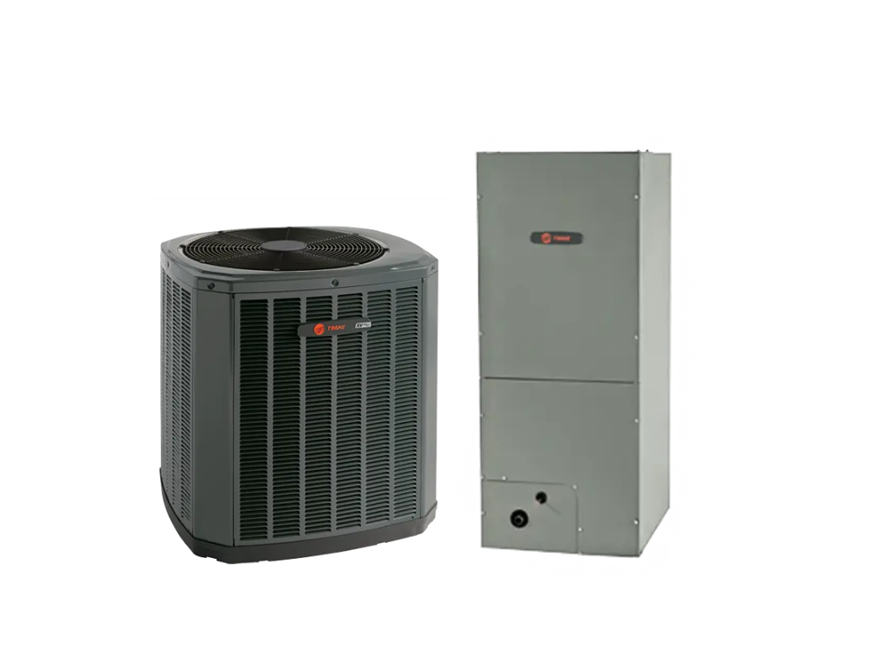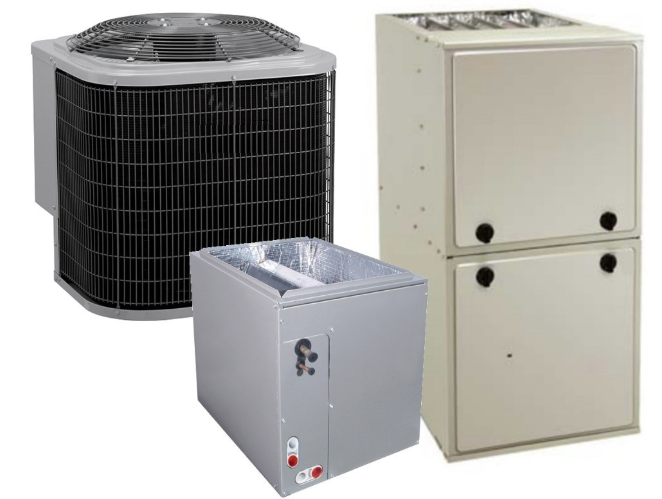2.5 Ton Split System Heat Pump

Understanding the 2.5 Ton Split System Heat Pump: A Comprehensive Guide
A 2.5 ton split system heat pump is a popular choice for homeowners seeking efficient heating and cooling solutions. This guide provides a detailed overview of these systems, covering their benefits, drawbacks, key features, pricing, and maintenance, enabling you to make an informed decision for your home or investment property.
What is a Split System Heat Pump?
Unlike package units that contain all components in a single cabinet, a split system heat pump has two main components: an outdoor unit (containing the compressor and condenser coil) and an indoor unit (containing the evaporator coil and air handler). These units are connected by refrigerant lines and electrical wiring. The heat pump functions by transferring heat, either from the outside air into your home for heating, or from inside your home to the outside air for cooling. In essence, it pumps heat rather than generating it, making it a more energy-efficient option than traditional furnaces.
Is a 2.5 Ton Unit Right For You?
The "tonnage" of a heat pump refers to its cooling capacity. A 2.5 ton unit can remove approximately 30,000 BTUs (British Thermal Units) of heat per hour. Determining the appropriate size for your home is crucial for optimal performance and efficiency. An undersized unit will struggle to maintain comfortable temperatures, while an oversized unit can lead to short cycling (frequent on-off cycles), which reduces efficiency and can damage the equipment. Factors to consider include:
- Square footage of your home: A general rule of thumb is that a 2.5 ton unit can effectively cool and heat homes between 1,200 and 1,500 square feet, but this can vary.
- Climate: Homes in hotter climates may require a larger unit.
- Insulation: Well-insulated homes require less cooling and heating capacity.
- Window efficiency: Energy-efficient windows reduce heat gain and loss.
- Ceiling height: Higher ceilings increase the volume of air to be conditioned.
- Sun exposure: Homes with significant sun exposure may require a larger unit.
Consult with a qualified HVAC contractor to perform a load calculation to determine the precise heating and cooling needs of your home. They will consider all relevant factors to ensure you select the correctly sized unit.
Pros and Cons of 2.5 Ton Split System Heat Pumps
Advantages
- Energy Efficiency: Heat pumps are generally more energy-efficient than traditional heating systems like furnaces, especially in moderate climates.
- Dual Functionality: Provides both heating and cooling in one unit, eliminating the need for separate systems.
- Improved Air Quality: Indoor air handlers often include air filters that can improve indoor air quality by removing dust, pollen, and other allergens.
- Quiet Operation: Split systems are generally quieter than window units or package units because the noisy compressor is located outside.
- Zoning Capabilities: Can be paired with zoning systems to provide customized temperature control in different areas of the home.
Disadvantages
- Lower Heating Efficiency in Extremely Cold Climates: Heat pumps become less efficient as temperatures drop significantly below freezing. In very cold climates, a supplemental heating source (e.g., electric resistance heat) may be required.
- Higher Upfront Cost: Heat pumps often have a higher upfront cost compared to traditional furnaces or air conditioners.
- Complex Installation: Requires professional installation to ensure proper refrigerant charge and system performance.
- Maintenance Requirements: Regular maintenance is essential to maintain efficiency and prevent breakdowns.
Key Features and Ratings
When evaluating 2.5 ton split system heat pumps, pay close attention to the following features and ratings:
SEER (Seasonal Energy Efficiency Ratio)
SEER measures the cooling efficiency of a heat pump. A higher SEER rating indicates greater efficiency. The minimum SEER rating currently mandated by the U.S. Department of Energy is 14. However, many models offer SEER ratings of 16 or higher. Look for a SEER rating of 16 or above for significant energy savings.
HSPF (Heating Seasonal Performance Factor)
HSPF measures the heating efficiency of a heat pump. A higher HSPF rating indicates greater heating efficiency. The minimum HSPF rating is 8.2, but many models offer ratings of 9 or higher. In colder climates, a higher HSPF rating is particularly important. Aim for an HSPF rating of 9 or higher for optimal heating performance.
AFUE (Annual Fuel Utilization Efficiency)
While AFUE is primarily associated with furnaces, it's still relevant to consider the supplemental heating system if one is needed alongside your heat pump in colder climates. AFUE measures the efficiency of converting fuel (typically gas or propane) into heat. Higher AFUE ratings indicate greater efficiency. If your home uses a furnace as backup, consider a model with at least 90% AFUE.
Compressor Type
The compressor is the heart of the heat pump. There are several types, including:
- Single-Stage: Operates at a fixed speed, providing consistent heating or cooling output.
- Two-Stage: Operates at two speeds (high and low), providing more efficient and comfortable operation.
- Variable-Speed (Inverter): Adjusts the compressor speed continuously to precisely match the heating or cooling demand, offering the highest efficiency and comfort. Variable-speed compressors are generally the most expensive but offer the greatest energy savings over the long term.
Refrigerant Type
The type of refrigerant used in the heat pump is also important. Older systems used R-22 refrigerant, which is being phased out due to environmental concerns. Modern systems use R-410A or other more environmentally friendly refrigerants. Ensure the system you choose uses an approved, environmentally friendly refrigerant.
Smart Features
Many modern heat pumps offer smart features, such as Wi-Fi connectivity, remote control via smartphone apps, and compatibility with smart thermostats. These features can enhance convenience and allow you to optimize energy usage.
Popular Brands and Models
Several reputable HVAC brands offer 2.5 ton split system heat pumps. Here are a few popular options:
- Carrier: Known for their reliability and advanced technology. Models like the Carrier Infinity series offer high SEER and HSPF ratings, along with variable-speed compressors and smart features.
- Trane: Another leading brand with a reputation for quality and durability. The Trane XV18 is a popular choice, featuring a variable-speed compressor and high efficiency ratings.
- Lennox: Offers a wide range of heat pumps to suit different budgets and needs. The Lennox SL28XCV is a high-end model with exceptional efficiency and quiet operation.
- Goodman: A more budget-friendly option that still offers good performance and reliability. Models like the Goodman GSZ16 provide a good balance of cost and efficiency.
- Rheem: Offers a range of efficient and innovative heat pump systems. The Rheem Prestige Series is known for its advanced features and energy-saving capabilities.
When comparing models, consider not only the initial cost but also the long-term operating costs and warranty coverage.
Pricing and Installation
The cost of a 2.5 ton split system heat pump can vary depending on the brand, model, efficiency rating, and features. Generally, expect to pay between $4,000 and $8,000 for the equipment alone. Installation costs can add another $1,500 to $4,000, depending on the complexity of the installation and the labor rates in your area.
Factors that can affect installation costs include:
- Existing ductwork: If your home already has ductwork in good condition, the installation process will be simpler and less expensive.
- Location of the indoor and outdoor units: Difficult access to the installation location can increase labor costs.
- Electrical work: If electrical upgrades are required to accommodate the new heat pump, this will add to the cost.
- Permits and inspections: Local building codes may require permits and inspections, which can add to the overall cost.
Obtain quotes from multiple HVAC contractors to compare pricing and services. Be sure to ask for a detailed breakdown of the costs, including equipment, labor, permits, and any other associated fees.
Warranties and Maintenance
Most heat pump manufacturers offer warranties on their products. Standard warranties typically cover parts for 5 to 10 years. Some manufacturers offer extended warranties that cover labor costs as well. Read the warranty carefully to understand what is covered and what is not.
Regular maintenance is essential to keep your heat pump operating efficiently and prevent breakdowns. Recommended maintenance tasks include:
- Changing air filters regularly: Dirty air filters restrict airflow and reduce efficiency. Replace filters every 1-3 months, depending on usage and air quality.
- Cleaning the outdoor unit: Remove debris, such as leaves and branches, from around the outdoor unit to ensure proper airflow.
- Inspecting and cleaning the coils: Dirty coils reduce heat transfer efficiency. Have a qualified technician clean the coils annually.
- Checking refrigerant levels: Low refrigerant levels can indicate a leak and reduce efficiency. Have a technician check refrigerant levels and add refrigerant as needed.
- Inspecting and tightening electrical connections: Loose electrical connections can cause problems. Have a technician inspect and tighten connections annually.
Consider scheduling annual maintenance with a qualified HVAC contractor to ensure your heat pump is operating at peak performance.
Conclusion
A 2.5 ton split system heat pump can be an excellent choice for homeowners seeking efficient heating and cooling solutions. By understanding the benefits, drawbacks, key features, pricing, and maintenance requirements of these systems, you can make an informed decision and choose the right unit for your home or investment property. Remember to consult with a qualified HVAC contractor to determine the appropriate size for your home and ensure proper installation.










